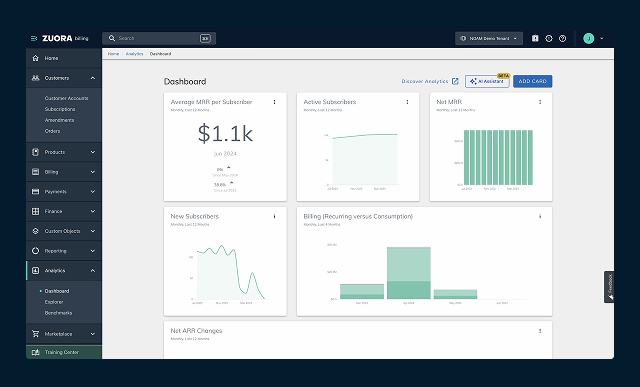This is a contributed piece for ERP Today written by Tyler Constable in his role as global head of solution engineering at Avantra – a company known for its AIOps automation platform designed to drive SAP operations.
Migrating SAP systems to the cloud offers many advantages but may also present complexities, regardless of the sector, whether that be healthcare, manufacturing, public services or other.
So then, what do company’s need to ensure they have the operational visibility, flexibility and security to migrate SAP systems to hyperscalers or any other public cloud hosting provider?
Constable writes as follows…
The cloud provides a robust infrastructure for hosting SAP and offers immense benefits with ultimate scalability and adaptability to manage changes in business requirements.
It means optimised costs with the right-sized computing resources to match business needs at any given time and removes the upfront CapEx and ongoing maintenance costs associated with on-premise hardware. However, because cloud infrastructure still needs management, using toolsets to make moving and managing systems in the public cloud easier enables different technologies to be deployed much faster.
When it comes to SAP environments, there is no underlying difference in the SAP technology whether installed on-premises or in the cloud. But yet, SAP does not naturally lend itself to the cloud environment. The use of toolsets designed to monitor and automate processes associated with SAP tasks removes much of the trivial and time-consuming activities like maintenance and troubleshooting and, instead, creates the time and freedom to innovate.
So, what are the best practices for moving your ERP to the cloud and how can you be sure you will have the performance you need today and into the future?
The right foundations
Foundation work is crucial. Each host cloud is a little different, but much of the success of migration or conversion comes down to the foundational work carried out at the front end of a project by a skilled managed service provider. If systems are placed in a ‘rigid box’ or shoehorned into a standard product, flexibility will be limited and you may not have the access and visibility you need to ensure you are in control of your systems.
With increasing audits and cybersecurity risks, organizations need to understand how their ERP system is performing and how it is being effectively managed.
The initial deployment must be optimised for SAP and the set-up of public files, networking access etc. all done methodically up front. The framework should be tailored to specific client needs instead of just diving into migrating systems.
Remember that you do not need to forklift everything to the cloud. Several businesses have busier periods during the year, and on-premises systems need to have the hardware to support these maximum throughputs. However, migrating to the cloud means you can scale quickly and control costs, paying only for the differential needed to run a larger environment during the period it is required.
Gaining transparency
Nick Miletich, chief technology officer at Managecore, a certified SAP and Google Cloud Partner, comments, “It is the organisation, not an MSP, that is ultimately accountable for the system. As such, clients need to know what is behind the scenes. Even if they don’t want to ‘look under the hood’, an MSP should provide the necessary transparency and flagging status changes and alerts. Accessibility and service levels should be what the client allows, not what an MSP dictates.”
To ensure you maintain control of your systems, you should define the accessibility that matches your business goals.
If an MSP does not provide console access, for example, you will not be able to spin up your servers or add disk space without it becoming a chargeable action. This takes away much of the inherent flexibility the cloud offers.
Not to mention, while organizations want to carry out these actions themselves, many don’t and rely on the MSP to provide these services. However, there is no reason to not have the option. A change in leadership may lead to a change in the systems management policy and the service provider should be able to pivot seamlessly to fit the needs.
Easier maintenance in the cloud
While marrying together the necessary cloud and SAP technology, having a subset of tools that can efficiently manage the environment provides value.
Miletich says, “We marry systems with a subset of tools. For example, we frequently use Avantra to monitor and manage systems on an ongoing basis and run scripts to automate actions where appropriate. This may include adding additional resources or spinning up servers. Using such tools combined with our highly skilled staff, result in an all-encompassing solution tailored to all an organization’s needs and aspirations.”
Systems are easier to maintain in the public cloud.
For example, to ask disk space to a system on-premises processes would typically require a ticket to be opened with the internal VMware personnel. This takes time. In the cloud, these are managed using automated scripts, or via a simple dashboard.
Migrating SAP and other systems to the cloud offers significant advantages in terms of scalability, flexibility, and efficiency. However, it is critical to spend time creating the right foundation in order to have a successful project and sustainable environment for the future. If systems are not built and deployed correctly, this can leave significant gaps in operations.
A successful SAP cloud deployment will marry together cloud and SAP technology and employ a subset of monitoring and management tools to help automate and alert about any changes to system status. It will help drive maintenance efficiency and provide the clarity needed to see how the environment is running and what is required to make further improvements.
Consider the transparency of your cloud environment. While everything may seem like a ‘black box’, and many rely on MSPs to ‘work their magic’ to keep systems running and optimized, you must have access to your systems. Fully utilizing the existing systems or deploying additional systems becomes challenging without transparency. Moreover, if you and your MSP understand what the other is doing, it reduces the risk of outages or security issues and ensures you know what you are getting for your dollar.
Editorial analysis
It’s interesting to hear Constable suggest that SAP ‘does not naturally lend itself to the cloud environment’ deployment, but that ‘toolsets designed to monitor and automate’ can save the day here – well, that’s what an SAP AIOps consultancy specialist would say after all.
But then again, Avantra has clearly built a business on these foundations and a walk around the smaller darker corners of an SAP Sapphire event will enable you to meet any number of vendors who fill in SAP gaps and/or create a market proposition with a software solution that either does part of what the total SAP platform may overlook (or not fundamentally offer as a specialism) or does what SAP does, but does it cheaper.
Avantra means ‘come on’ in Italian, let’s hope the company is genuine without any come-ons.




